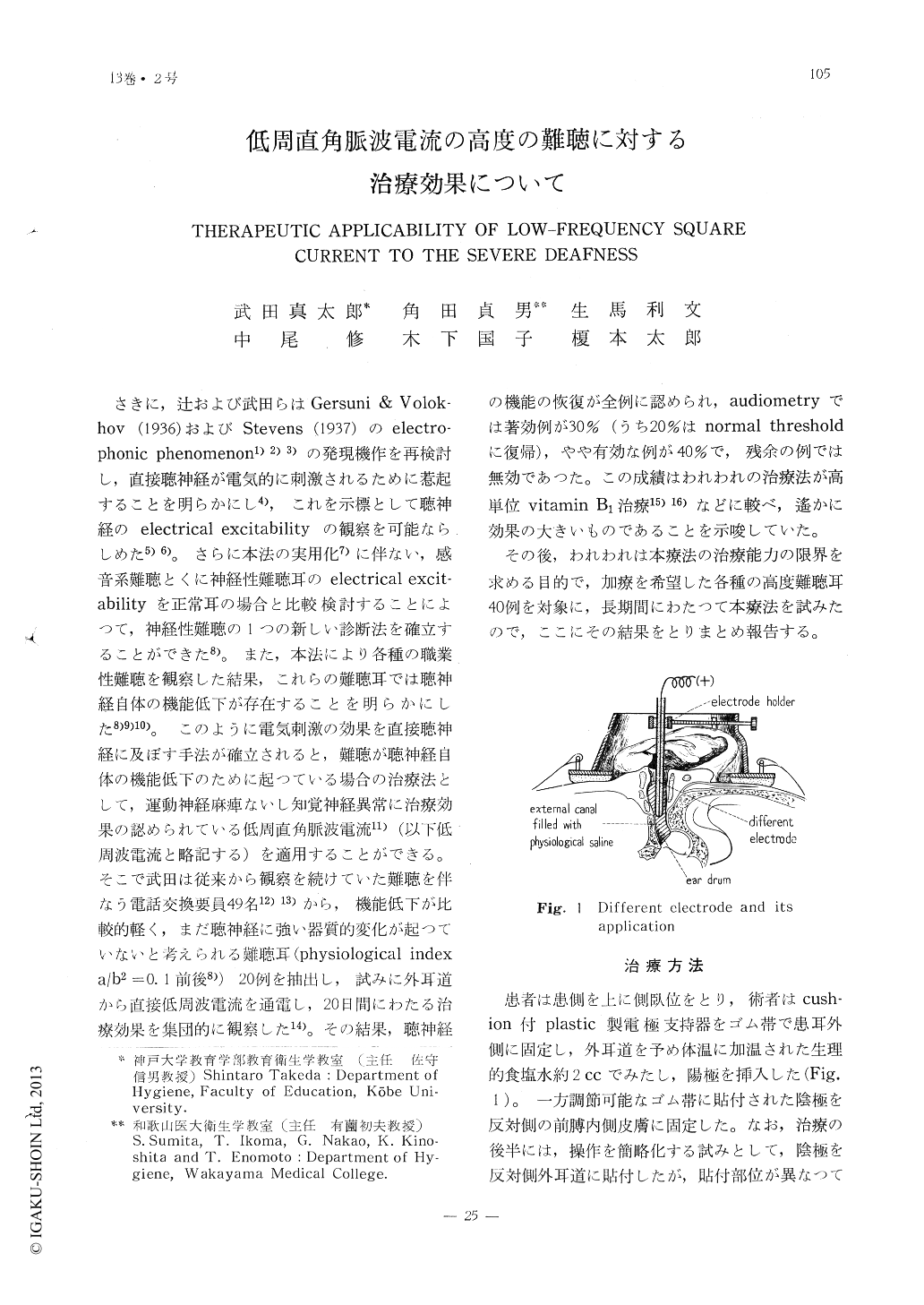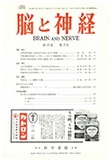Japanese
English
- 有料閲覧
- Abstract 文献概要
- 1ページ目 Look Inside
さきに,辻および武田らはGersuni & Volok-hov (1936)およびStevens (1937)のelectro-phonic phenomenon1)2)3)の発現機作を再検討し,直接聴神経が電気的に刺激されるために惹起することを明らかにし4),これを示標として聴神経のelectrical excitabilityの観察を可能ならしめた5)6)。さらに本法の実用化7)に伴ない,感音系難聴とくに神経性難聴耳のelectrical excit-abilityを正常耳の場合と比較検討することによつて,神経性難聴の1つの新しい診断法を確立することができた8)。また,本法により各種の職業性難聴を観察した結果,これらの難聴耳では聴神経自体の機能低下が存在することを明らかにした8)9)10)。このように電気刺激の効果を直接聴神経に及ぼす手法が確立されると,難聴が聴神経自体の機能低下のために起つている場合の治療法として,運動神経麻痺ないし知覚神経異常に治療効果の認められている低周直角脈波電流11)(以下低周波電流と略記する)を適用することができる。
The therapeutic applicability of the low-frequency square current on external canal of the severe deafness was studied.
Eighty-five per cent among 20 deaf cases that had shown electrically hypo-excitability (index a/b2 was smaller than 0.1) recovered 20 db. or more in estimating at the standard hearing level. A few 25% among 16 deaf cases whose index a/b2 was above 0.1 proved to be improved with their hearing. The rest 75% did never. Four children, on which au-ditory chronaximetry 'could not be surveyed, had no chance to effectually receive this ther-apeutic application.
In conclusion, low-frequency square current is applicable as a treatment improving the acoustic aquity of the deafness accompanied by the hypo-excitability, to which the so-call-ed neural deafness would be id entified.

Copyright © 1961, Igaku-Shoin Ltd. All rights reserved.


